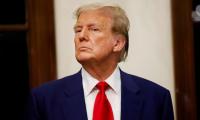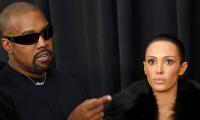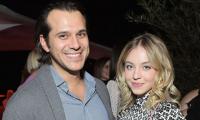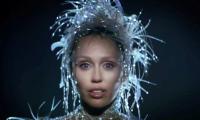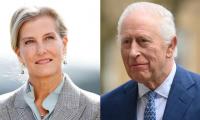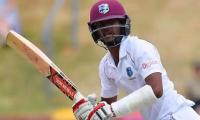LAHORE: Pakistan’s newly elected President, Dr. Arif ur Rehman Alvi (born July 29, 1949), is the second dentist ever in world history, after Turkmenistan’s Dr. Gurbanguly Berdimuhamedow, to head a state or a government, research conducted by the "Jang Group and Geo Television Network" shows.
Dr. Gurbanguly (born 1957), also a dental surgeon by profession, has been serving as President of Turkmenistan since February 2007. He was previously appointed as Minister of Health in 1997 and then as Vice-President beginning in 2001.
In the past, Dr. Arif Alvi had served as the President of the Asia-Pacific Dental Federation and as head of the Pakistan Dental Association. Research shows that apart from the two above-named dentists, numerous medical doctors have gone on to become heads of the state or the prime ministers of their respective countries. Some of them ruled in fresh or unstable democracies of Asia, Africa and Latin America. Three of these medical doctors were bloody dictators too!
Here follows a list of medical doctors who became the heads of the state or the prime ministers of their countries after specializing in medicine and public health:
President Sun Yat-sen (1866-1925) was the founding father of China. He was the first provisional president of China. He was a physician.
Sitting Malaysian Premier, Mahathir bin Mohamad, had excelled at school and became a medical doctor.
The 93-year old Mahathir had previously served as Prime Minister from 1981 to 2003, making him the office’s longest-serving holder. Mahathir’s political career spans over 70 years.
Brazilian President, Juscelino de Oliveira (1902-1976), had ruled Brazil from 1956 to 1961. He became a licensed Medical Doctor after seven years of schooling. He then went to live in Europe for a few years after graduating eventually returning to Brazil after the revolution of 1930.
Chilean President, Veronica Jeria (born 29 September 1951) served as Chile’s head of state twice; from 2006 to 2010 and from 2014 to 2018.
She originally intended to study Sociology or Economics, but was prevailed upon by her father to study medicine instead.
Veronica said in an interview that she had opted for medicine because it was concrete way of helping people cope with pain and a way to contribute to improve health in Chile.
Gro Harlem Brundtland (born 1939), is a Norwegian politician who served three terms as her country’s Prime Minister (1981, 1986–89, and 1990–96). Educated as a physician, she also served as Director General of the World Health Organization (WHO) from 1998 to 2003.
Incumbent Syrian President, Bashar al-Assad of Syria (born 11 September 1965), had graduated from the medical school of Damascus University in 1988 and started to work as a doctor in the Syrian Army. Four years later, he attended postgraduate studies at a London Eye hospital, specializing in Ophthalmology.
Prime Minister Navin Ramgoolam of Mauritius (born 14 July 1947), had proceeded to study medicine at the Royal College of Physicians in Ireland between 1968 and 1975 and the Royal College of Surgeons in Ireland. He served as Premier from 2005 to 2014.
President Sali Berisha of Albania (15 October 1944), is a Cardiologist by profession.
He also served as Albanian Premier from 2005 to 2013.
Former Premier of Canada, Charles Tupper (1821 to 1915), had studied medicine at the University of Edinburgh Medical School, graduating as Doctor of Medicine (MD) in 1843.
By the age of 22, he had handled 116 obstetric cases. He practiced medicine periodically throughout his political career and served as the first president of the Canadian Medical Association. A former Australian Prime Minister, Earle Page (1880-1961), had held office for 19 days only. He entered the University of Sydney at the age of 15, and completed a degree in medicine at the age of 21. After completing his residency at Sydney’s Royal Prince Alfred Hospital, he had opened a private hospital.
President Milton Margai of Sierra Leone (1895-1964), had studied medicine in England, and upon returning to his homeland, he became a prominent public health campaigner.
President Francois Duvalier of Haiti (1907-1971), was a physician by profession.
His profession and expertise in the field acquired him the nickname "Papa Doc."
President Najibullah Ahmedzai of Afghanistan (1947-1996), had graduated with a degree in medicine in 1975. He had served as Afghan head of state from 1987 until 1992, when Kabul was taken over by Mujahedeen.
Hastings Banda (1899-1997), was the President and Premier of Malawi, from 1964 to 1994. He had studied medicine in United States and obtained a Doctor of Medicine degree in 1937.
He also studied at University of Edinburgh in England till 1941.
Libyan Prime Minister Baghddi Mahmudi (born 1945) had served his country from 2006 to 2011.
He was trained as a physician, and in 1992, was appointed Libyan Minister of Health and Social Security. Syrian Premier Wael Nader Al-Halq (born 1964), had served from 2012 to 2016. He earned a degree in medicine from the University of Damascus in 1987 and a master’s degree in Gynecology and Obstetrics again from the University of Damascus in 1991.
Denzil Douglas (born 1953), the longest-serving Prime Minister of Saint Kitts and Nevis, had ruled from 1995 to 2015. Douglas studied medicine as a young man. He obtained a Bachelor of Science degree in 1977 and a degree in Medicine in 1984 from the University of West Indies.
In 1986, he established a private medical practice as a family physician and served as President of the St. Kitts-Nevis Medical Association in the late 1980s.
President Federico Franco of Paraguay (born 1962) had served from June 2012 until August 2013. Franco is a surgeon by profession.
First President of Nepal, Ram Baran Yadav had served from 2008 to 2015. Yadav began his political career while studying medicine in Calcutta (India).
For the information of readers, the first American President, George Washington, had only one working tooth left at his inauguration in 1789. Having lost all his teeth by middle age, President Washington wore dentures made from ivory, lead, and pig and cow teeth. He even wore dentures made from human teeth, which were very common in the end of the 18th century. Washington might have had bad teeth, but he never gave up hope; until he died, he had spent money on different types of toothbrushes and cleaning solutions.
Similarly, another American President, John Adams, was also lacking in the dental department, and, like Washington, he lost them young. However, unlike Washington, he refused to wear the uncomfortable dentures of the time. He had a lisp from the missing teeth and rarely opened his mouth when he didn’t have something important to say.
President John Adams’ son, John Quincy Adams (another US head of state), had also suffered from a multitude of dental problems as an adult. But the cause of his issues was different. As a child, he was given mercury as a treatment for smallpox, which eroded his teeth. He also started smoking before his tenth birthday, which didn’t help the situation.
Yet another American President, Abraham Lincoln, was known to have a fear going to the dentist.
History shows that might have had something to do with the lack of painkillers available to patients when, in 1841, a dentist injured Lincoln’s jaw while pulling a tooth.
Due to this fear, he only visited the dentist four times in his life.
Lincoln was one of the first people outside of the medical community to use chloroform as a medical anesthetic, which he self-administered before some of his later dentist appointments.
